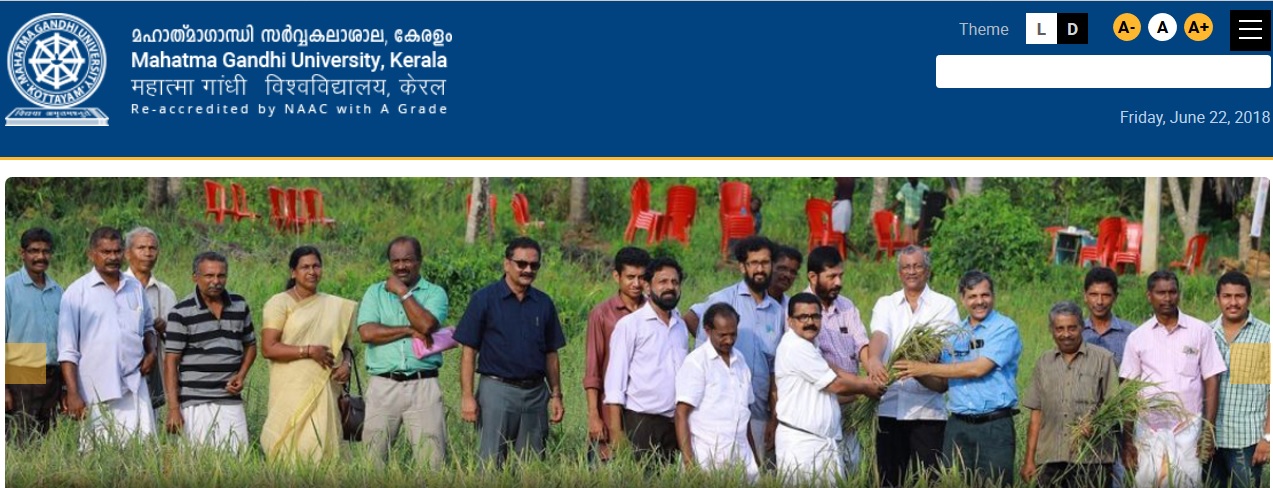Metrology & Computer Aided Inspection M.Tech Model Question Paper : mgu.ac.in
Name of the College : Mahatma Gandhi University
Department : Mechanical Engineering
Subject Code/Name : MMEPI 105.1 / MMEMP 105.1 / MMECM 105.1 Metrology And Computer Aided Inspection
Sem : I
Website : mgu.ac.in
Document Type : Model Question Paper
Download Model/Sample Question Paper :
I : https://www.pdfquestion.in/uploads/mgu.ac.in/5069-1-MMEPI%20105_1,%20MMECM%20105_1,%20MMEMP%20105_1%20METROLOGY%20AND%20COMPUTER%20AIDED%20INSPECTION%20-%20I.doc
II : https://www.pdfquestion.in/uploads/mgu.ac.in/5069-2-MMEPI%20105_1,%20MMECM%20105_1,%20MMEMP%20105_1%20METROLOGY%20AND%20COMPUTER%20AIDED%20INSPECTION%20-%20II.doc
MGU Computer Aided Inspection Question Paper
M. TECH. DEGREE EXAMINATION, MODEL QUESTION PAPER – I :
First Semester :
Branch: Mechanical Engineering
Related : MGU Quality Engineering & Management M.Tech Model Question Paper : www.pdfquestion.in/5068.html
Specialisation: Production and Industrial Engineering / Advanced Manufacturing and Production Management / Computer Integrated Manufacturing
MMEPI 105.1 / MMEMP 105.1 / MMECM 105.1 Metrology And Computer Aided Inspection
(Regular – 2013 Admissions)
Time: Three Hours
Maximum: 100 Marks
PAPER I
(Answer all questions)
1. a. Explain various kinds of errors faced in metrology. (15 marks)
b. Explain Abbe’s principle with suitable examples. (5 marks)
c. Differentiate between “precision” and “Accuracy”. (5 marks)
OR
2. a. Explain the basics of light interference and fringe formation. (10 marks)
b. Explain the manufacturing steps involved in the slip gauges production. Describe how the slip gauges are calibrated. (10 marks)
c. Explain wavelength standards and end standards. (5 marks)

3. a. Write short notes on (1) Hole basis system: (2) Shaft basis system. Why the hole basis system is preferred in most cases? (10 marks)
b. Distinguish between surface waviness and roughness. Describe how waviness is eliminated during the measurement of surface roughness. (10 marks)
OR
4. a. How the effective diameter of a screw thread can be accurately measured by a 3-wire method? (10 marks)
b. Explain the working of a mechanical comparator with neat sketch. (10 marks)
c. What is sampling length? What is the fundamental involved in choosing the sampling length. (5 marks)
5. a. Discuss in detail about speckle metrology. (10 marks)
b. Write a note on laser telemetric system. (10 marks)
c. What are the possible errors in a CMM? (5 marks)
OR
6. a. Explain in detail various laser inspection systems. How do you select a best inspection system for your part? (15 marks)
b. List the types of probes used in CMM and its applications in metrology. (10 marks)
7. a. Explain the image processing and analysis techniques in machine vision systems. (15 marks)
b. Explain advantages of using CMM. (10 marks)
OR
8. a. Explain the role of CMM in inspection and measurements with examples (10 marks)
b. Explain how image processing technique is used in metrology. (10 marks)
c. Explain the fields and applications of machine vision system. (5 marks)
PAPER II
M. TECH. DEGREE EXAMINATION, MODEL QUESTION :
1. a. Explain the three standards associated with linear measurements. (10 marks)
b. Explain the accurate measurement of flatness of a slip gauge by an optical interferometer. (10 marks)
c. What is Abbe’s principle of alignment? (5 marks)
OR
2. a. Explain the working principle of an interferometer with neat sketches (10 marks)
b. Explain the principle and application of optical flats. (10 marks)
c. Explain the advantages of using wavelength standards (5 marks)
3. a. Design the general type “GO” and “NO-GO” gauges for components having 25 H7/f8 fit. Being given tolerance unit i (microns) = (D in mm); the upper deviation for f shaft = ; 25 mm falls in the diameter step of 18 and 30; IT 7 = 16i & IT 8 = 25i. Take wear allowance as 10% of the gauge tolerance. Also determine (i) type of fit and (ii) allowance for the above fit. (20 marks)
b. Explain how sine bar is used to measure: (i) angle of component of small size. (ii)angle of component of large size. (5 marks)
OR
4. a. Explain the external screw thread terminologies with a neat sketch. Also explain various methods to measure them. (15 marks)
b. Explain the principle and advantages of mechanical optical comparators with a neat sketch. . (10 marks)
5. a. Explain the working of laser interferometer with neat sketch. (15 marks)
b. Explain the construction and working of any two types of CMM with simple sketches. (10 marks)
OR
6. a. Explain how accuracy is specified in CMM. (10 marks)
b. Write a note on laser triangulation technique. (10 marks)
c. Explain applications of lasers in precision measurements. (5 marks)
7. a. Explain various steps in machine vision system. (15 marks)
b. Explain any one method used for calibrating CMM. (10 marks)
OR
8. a. Discuss how image processing is useful in metrology. Support your discussion with examples. (10 marks)
b. For what conditions the CMMs are particularly suited? Explain. (10 marks)
c. write a note on use of moiré fringes in metrology. (5 marks)